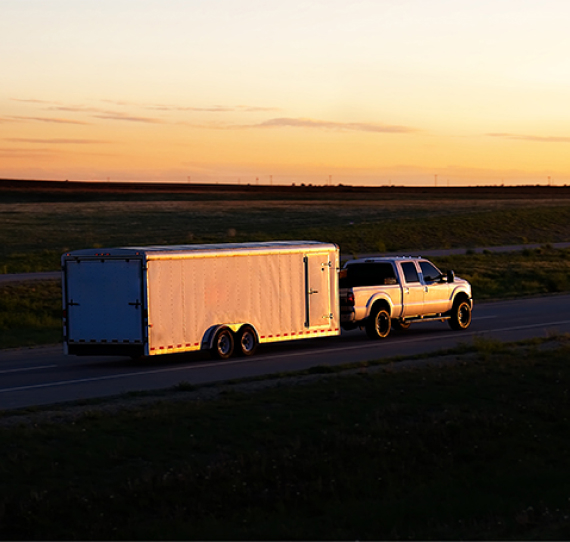Protecting businesses through driver safety
Driver and vehicle safety resources
Operating vehicles has always exposed an organization to considerable risk. In recent years, roads have become increasingly hazardous, with a sharp increase in fatalities and accident costs. Safe driving is ultimately the responsibility of the person behind the wheel, as 94% of accidents can be attributed to a driver’s actions.1 Get more details on the current fleet risk environment.
You can begin establishing a fleet safety program by developing a fleet safety manual and offering the training modules featured in the online training section toward the bottom of this page.
Under each icon below, access materials compiled by our Loss Control Services team about the most common accidents and risks drivers face. Please share these with drivers to help keep them safe, prevent disruptions to your operations and protect your bottom line.

![]()
The roadway fatality rate has increased 22% since 2019.2 Increased speeding and distracted driving are factors, along with a decrease in safety belt usage.
24%
Motor vehicle crashes are the leading cause of work-related deaths in the U.S., accounting for 24% of worker fatalities.3
-
Accident types
Rear-end collisions make up about 28% of all crashes.4 Review resources for preventing these and other severe types of accidents.
Light and medium vehicles5
Left-turn collisions infographic
Pedestrian collisions infographic
-
Distracted driving
Distracted driving is a major cause of crashes. Use these tools to manage distracted driving within your fleet.
-
Speeding
28% of all fatal vehicle crashes are speed-related.6 The resources below can help keep drivers safe.
All vehicles
$4,000
Average repairs now take 6 to 8 weeks from scheduling to completion, and the cost of minor fender benders averages $4,000.7
18%
Pedestrian fatalities increased 18% from 2019 to 2021 and are at their highest level since 1981.8
-
Technology
Telematics, dashcams and advanced vehicle safety systems have become essential for any fleet safety program.
All vehicles
-
Vehicle maintenance
Maintaining vehicles keeps people safe and operations running smoothly. Use the resources below to support safe practices.
Light and medium vehicles5
Medium and heavy vehicles5
-
Driver fatigue
Proper rest and readiness helps drivers perform their best. Get resources to help drivers know the importance of rest.
Light and medium vehicles5
Medium and heavy vehicles5
Online training
Our training resources include courses on distracted driving (available below), rear-end collisions, truck inspections and more.
Nationwide members must register and sign in to mylosscontrolservices.com to access all our online training. Once signed in, click the Videos and Online Training link under the Learning Center tab.
Light and medium vehicles5
Rear-end collisions
Medium and heavy vehicles5
Distracted driving
Preventing common injuries to truck drivers
Rear-end collisions
Truck inspections
Get more information
This page shows just a sample of the fleet safety resources available to Nationwide® customers. For more information, visit our Loss Control Services site or contact us directly for assistance.
[1] “Critical Reasons for Crashes Investigated in the National Motor Vehicle Crash Causation Survey,” National Highway Traffic Safety Administration, DOT HS 812 506 (March 2018).
[2] “Early estimate of motor vehicle traffic fatalities for the first quarter of 2023,” National Highway Traffic Safety Administration, DOT HS 813 482 (June 2023).
[3] “Census of Fatal Occupational Injuries,” U.S. Bureau of Labor Statistics (2021).
[4] “Traffic Safety Facts 2020: A Compilation of Motor Vehicle Crash Data,” National Center for Statistics and Analysis and National Highway Traffic Safety Administration, DOT HS 813 375 (October 2022).
[5] Resources listed under light and medium vehicles apply to cars, SUVs, pickups, vans, shuttles and straight trucks up to about 16,000 GVWR. Those listed as Medium and heavy apply to vehicles over 10,000 GVWR, including tractor-trailers. Organizations with medium vehicles should look under both categories.
[6] “Traffic Safety Facts: Speeding, 2020 data,” National Center for Statistics and Analysis and National Highway Traffic Safety Administration, DOT HS 813 320 (June 2022).
[7] “Nationwide Agency Forward Driving Behaviors Survey Findings,” news.nationwide.com/download/fdbb5f95-29cc-4703-9ebe-0364e78bd0f4/nationwidedrivingbehaviors2023findings.pdf (March 2023).
[8] “Traffic Safety Facts: 2021 Data,” National Center for Statistics and Analysis and National Highway Traffic Safety Administration, DOT HS 813 458 (June 2023).